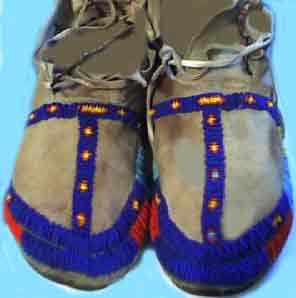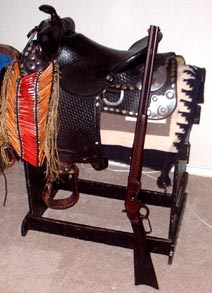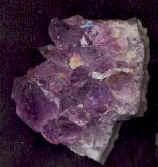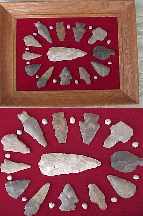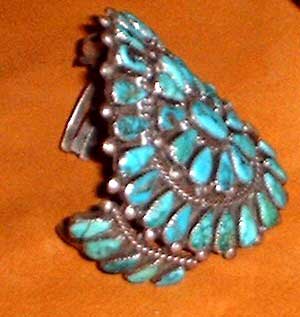    


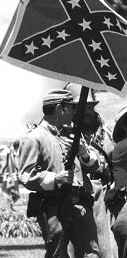

TEXAS HISTORY-THE GOLIAD MASSACRE

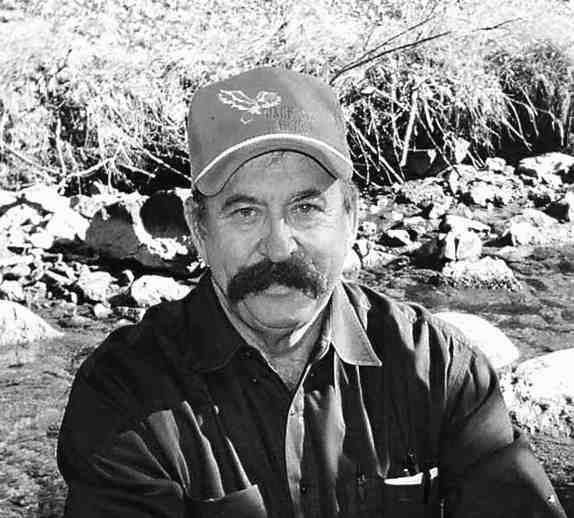
Len Kubiak, Texas Historian.
Welcome to our Texas History Series. On this webpage, we provide the history of Goliad, a mission in south Texas that played a role in the Texas Revolution. The massacre of the soldiers captured at Goliad by the Mexican army at the orders of Santa Anna provided inspiration and determination for Sam Houston's ill-trained troops as they rose to great heights and defeated the army of Santa Anna at Goliad.
Events Preceeding the The Goliad Massacre
In February of 1836, Mexican General Jose Urrea with some 900 troops, left Matamoros and followed a coastal route into Texas. The first town, San Patricio, where on February 27, was defended by Frank Johnson and about 50 Texans. Johnson and four of his men escaped, but the rest were either killed or captured. A few days later, the Mexicans attacked James Grant and a company of approximately 50 men; all but one of the Texians were killed.
Citizens of Refugio, the next town in Gen. Urrea's path, were defended by James W. Fannin, commander of forces at Goliad, who sent two relief forces.

Capt. James W. Fannin, born in North Carolina in 1800; commander of the Texian Garrison at Goliad
The first of these groups numbered about 30 men under Aaron King, followed by a larger group of some 150 men under William Ward. Like Johnson's force, both of these groups were eventually killed or captured by the Mexicans.
Fannin Called to Aid the Alamo
In Goliad, a messenger delivered an urgent plea for help from William Barrett Travis at the Alamo. Afterwards, Fannin was ordered by Sam Houston to retreat back to Victoria. Due to indecision and carelessness by Fannin, however, he failed to accomplish either of these missions.
Fannin Starts His Retreat to Victoria
After a delay of about five days following Houston's order, Fannin finally began his retreat. It was not long, however, before the Texans found themselves surrounded on the open prairie. Several attacks by General Urrea resulted each time in the Mexicans being repulsed by the deadly fire of the Texans. By dusk, the Texans had lost about sixty men killed or wounded against some 200 of the Mexicans.
However, General Urrea returned the next day with a reinforcement of 500 men, together with artillery.
Heavily outnumbered and surrounded,with no water and few supplies, the Texans elected not to fight and waved the white flag of truce the following morning.
The Texians Were Tricked into Surrendering
Fannin's men had agreed in writing to their conditions for surrender. Basically, Fannin and his men, including his officers and the wounded, would be treated as prisoners of war according to the usages of civilized nations and, as soon as possible, paroled and returned to the United States. In view of Santa Anna's orders, Urrea could not accept these terms, but refusing them would mean another bloody battle.
Fannin Surrenders His Army and Weapons
Fannin's men were well armed having some 500 spare muskets and nine brass cannons. When the Mexican and Texan commissioners seeking surrender terms failed to agree, Urrea shortened the conference by dealing directly with Fannin and proposing written terms, under which the Texans should give up their arms and become prisoners of war "at the disposal of the Supreme Mexican Government."
Urrea assured Fannin that there was no known instance where a prisoner of war who had trusted to the clemency of the Mexican government had lost his life, that he would recommend to General Santa Anna acceptance of the terms proposed by Fannin's men, and that he was confident of obtaining Santa Anna's approval within a period of eight days.
During this time, Gen. Urrea had received reinforcements and artillery. Fannin's men delivered up their arms, and some 230 or 240 uninjured or slightly wounded men were marched back to Goliad and imprisoned in the chapel of Nuestra Se�ora de Loreto Presidio at La Bah�a, the fort they had previously occupied. The wounded Texans, about fifty (some estimates are much higher) including doctors and orderlies, Colonel Fannin among them, were returned to Goliad over the next two days.
On March 22 William Ward, who with Amon B. King had been defeated in the battle of Refugio, surrendered near Dimitt's Landing on the terms accorded Fannin, and he and about eighty of his men of the Georgia Battalion were added to the Goliad prisoners on March 25.
Urrea, in compliance with his promise, wrote to Santa Anna from Guadalupe Victoria, informing him that Fannin and his men were prisoners of war "at the disposal of the Supreme Mexican Government" and recommending clemency; but he reported nothing in his letter of the terms that Fannin and his men had drafted for their surrender.
Santa Anna Refused Clemency for Fannin's Army
Santa Anna replied to Urrea's clemency letter on March 23 by ordering immediate execution of these "perfidious foreigners" and repeated the order in a letter the next day. Meantime, on March 23, evidently doubting Urrea's willingness to serve as executioner, Santa Anna sent a direct order to the "Officer Commanding the Post of Goliad" to execute the prisoners in his hands. This order was received on March 26 by Col. Jos� Nicol�s de la Portilla, whom Urrea had left at Goliad.
Two hours later Portilla received another order, this one from General Urrea, "to treat the prisoners with consideration, and especially their leader, Fannin," and to employ them in rebuilding the town. But when he wrote this seemingly humane order, Urrea well knew that Portilla would not be able to comply with it, for on March 25, after receiving Santa Anna's letter, Urrea had ordered reinforcements that would have resulted in too large a diminution of the garrison for the prisoners to be employed on public works.
Believing that they would be taken captive and eventually returned to their homes, the Texans surrendered the morning of March 20. The prisoners were escorted back to Goliad as prisoners.
Fannin's Forces Executed at Goliad on March 27, 1836
When the Mexican general reported to Santa Anna that he was holding the San Patricio prisoners, Santa Anna ordered Urrea to comply with the decree of December 30. Urrea complied to the extent of issuing an order to shoot his prisoners, along with those captured in the battle of Agua Dulce Creek, but he had no stomach for such cold-blooded killing; and when Father Thomas J. Malloy, priest of the Irish colonists, protested the execution, Urrea remitted the prisoners to Matamoros, asking Santa Anna's pardon for having done so and washing his hands of their fate.
At Refugio on March 15, 1836, Urrea was again confronted with the duty of complying with the fatal decree of December 30. Thirty-three Americans were captured in the course of the fighting at Nuestra Se�ora del Refugio Mission, half of them with Capt. Amon B. King's company, the others "one by one". King and his men had infuriated their enemies by burning local ranches and shooting eight Mexicans seated around a campfire, and these enemies were clamoring for vengeance. Urrea satisfied his conscience by shooting King and fourteen of his men, while "setting at liberty all who were colonists or Mexicans."
Portilla suffered an unquiet night weighing these conflicting orders, but he concluded that he was bound to obey Santa Anna's order and directed that the prisoners be shot at dawn.
Palm Sunday, March 27, 1836
At sunrise on Palm Sunday, March 27, 1836, the unwounded Texans were formed into three groups under heavy guard commanded by Capt. Pedro Balderas, Capt. Antonio Ram�rez, and first adjutant Agust�n Alc�rrica (a colonel in the Tres Villas Battalion in April 1836). The largest group, including what remained of Ward's Georgia Battalion and Capt. Burr H. Duval's company, was marched toward the upper ford of the San Antonio River on the Bexar road. The San Antonio Greys, Mobile Greys, and others were marched along the Victoria road in the direction of the lower ford. Capt. John Shackelford's Red Rovers and Ira J. Westover's regulars were marched southwestwardly along the San Patricio road. The guard, which was to serve also as a firing squad, included the battalions of Tres Villas and Yucat�n, dismounted cavalry, and pickets from the Cuautla, Tampico, and Durango regiments.
The prisoners held little suspicion of their fate, for they had been told a variety of stories-they were to gather wood, drive cattle, be marched to Matamoros, or proceed to the port of Copano for passage to New Orleans. Only the day before, Fannin himself, with his adjutant general, Joseph M. Chadwick, had returned from Copano, where, accompanied by Holsinger and other Mexican officers, they had tried to charter the vessel on which William P. Miller's Nashville Battalion had arrived earlier (these men had been captured and imprisoned at Goliad, also).
Although this was really an attempt by Urrea to commandeer the ship, the vessel had already departed. Still, Fannin became cheerful and reported to his men that the Mexicans were making arrangements for their departure. The troops sang "Home Sweet Home" on the night of March 26.
At selected spots on each of the three roads, from half to three-fourths of a mile from the presidio, the three groups were halted. The guard on the right of the column of prisoners then counter marched and formed with the guard on the left. At a prearranged moment, or upon a given signal, the guards fired upon the prisoners at a range too close to miss. Nearly all were killed at the first fire. Those not killed were pursued and slaughtered by gunfire, bayonet, or lance. Fannin and some forty (Pe�a estimated eighty or ninety) wounded Texans unable to march were put to death within the presidio under the direction of Capt. Carolino Huerta of the Tres Villas battalion.
From two groups shot on the river roads, those not instantly killed fled to the woods along the stream, and twenty-four managed to escape. The third group, on the San Patricio road, was farther from cover; only four men from it are known to have escaped. A man-by-man study of Fannin's command indicates that 342 were executed at Goliad on March 27. Only twenty-eight escaped the firing squads, and twenty more were spared as physicians, orderlies, interpreters, or mechanics largely because of the entreaties of a "high bred beauty" whom the Texans called the "Angel of Goliad", and the brave and kindly intervention of Col. Francisco Garay. Many of those who eventually escaped were first recaptured and later managed a second escape. Two physicians, Joseph H. Barnard and John Shackelford, were taken to San Antonio to treat Mexican wounded from the battle of the Alamo; they later escaped.
Portilla wrote that the total number of his prisoners was 445, exclusive of William P. Miller's eighty men, who had been captured without arms at Copano and were thus to be spared. Texan sources specify the number of prisoners as 407, exclusive of Miller's men. This may have been correct. Some of the prisoners taken at Refugio but not executed with King's men are known to have been at Goliad, where they were again spared because they were serving the Mexican army as blacksmiths, wheelwrights, or other artisans. The exact fate of others captured at Refugio is not known. They may have been added to the prisoners at Goliad and killed with Fannin on March 27.
General Urrea detained about twenty of Ward's men to build boats at Guadalupe Victoria, and Se�ora Alavez intervened with her husband, Col. Telesforo Alavez, whom Urrea left in charge of this village, to spare their lives as well; they afterward escaped.
About a week after the Goliad killings, Santa Anna ordered the execution of Miller and his men and the others who had been spared at Goliad, but he rescinded the order the next day. The men were marched instead to Matamoros after the battle of San Jacinto. Though some managed to escape en route, most remained there until the Mexican government later released them.
Men of Goliad Served as Martyrs
Like the defenders at the Battle of the Alamo, the men of Goliad served as martyrs for Sam Houston's army and three weeks later, the Texans got their revenge. Inspired by cries of "Remember Goliad" and "Remember the Alamo," the outnumbered Texans won one of history's most decisive victories at the Battle of San Jacinto
Goliad Massacre Victims Buried in Mass Grave on June 3, 1836
After the executions the bodies were burned, the remains left exposed to weather, vultures, and coyotes, until June 3, 1836, when Gen. Thomas J. Rusk, who had established his headquarters at Victoria after San Jacinto and was passing through Goliad in pursuit of Gen. Vicente Filisola's retreating army, gathered the remains and buried them with military honors. Some of the survivors attended the ceremony.
Mass Grave Unmarked Until 1858
The common grave remained unmarked until about 1858, when a Goliad merchant, George von Dohlen, placed a pile of rocks on what was believed to be the site. In April 1885 a memorial was finally erected, in the city of Goliad rather than on the site, by the Fannin Monument Association, formed by William L. Hunter, a massacre survivor.
Original Burial Site Rediscovered in 1930
In 1930 some Goliad Boy Scouts found charred bone fragments that had been unearthed over the years by animals, and an excursion to the site by Goliad residents on New Year's Day, 1932, succeeded in attracting an investigation of the site by University of Texas anthropologist J. E. Pearce. The authenticity of the gravesite was further verified by historians Clarence R. Wharton and Harbert Davenport.
In 1936, in celebration of the Texas Centennial, money was appropriated to build a massive pink granite monument, dedicated on June 4, 1938. Davenport presented the address, which was published as "The Men of Goliad" in the Southwestern Historical Quarterly (1939).
The impact of the Goliad Massacre was crucial. Until this episode, Santa Anna's reputation had been that of a cunning and crafty man, rather than a cruel one. When the Goliad prisoners were taken, Texas had no other army in the field and the newly constituted ad interim government seemed incapable of forming one. The Texas cause was dependent on the material aid and sympathy of the United States.
Had Fannin's and Miller's men been dumped on the wharves at New Orleans penniless, homesick, humiliated, and distressed, and each with his separate tale of Texas mismanagement and incompetence, Texas prestige in the United States would most likely have fallen, along with sources of help. But Portilla's volleys at Goliad, together with the fall of the Alamo, branded both Santa Anna and the Mexican people with a reputation for cruelty and aroused the fury of the people of Texas, the United States, and even Great Britain and France, thus considerably promoting the success of the Texas Revolution.
HISTORY OF THE TOWN OF GOLIAD
There are several historic sites in and around what became the town of Goliad including the Mission Esp�ritu Santo, and the Presidio La Bah�a.
Mission Esp�ritu Santo de Zuniga
Mission Nuestra Senora del Espiritu Santo de Zuniga, generally called Mission Espiritu Santo was founded in 1722 near Matagorda Bay to serve the Karankawa Indians and their allies. The indians abandoned the mission in 1724, and two years later the missionaries moved to Mission Valley near Victoria which was in the territory of the Aranama and Tamique Indians.

In 1749, the mission was relocated to its present site on the San Antonio River near modern Goliad. Mission Espiritu Santo was the first large cattle ranch in Texas, and was granted jurisdiction over all land between the Guadalupe and San Antonio Rivers as far north as Capote Hills near Gonzales. Espiritu Santo existed as a mission for 110 years, longer than any other Spanish colonial mission in Texas.
In 1848, the Goliad City Council rebuilt the principal structures for use as public school facilities. Later it became Aranama College, the first institution in Texas established for education of Spanish-speaking Texans. The college for men lasted until the outbreak of the Civil War when the student body marched off to join the Confederate Army.
At Goliad State Park you can tour the fully reconstructed Franciscan Mission Esp�ritu Santo.


Presidio La Bah�a
Near Mission Esp�ritu Santo is the Presidio La Bah�a. This historic site, operated by the Catholic Diocese of Victoria, features exhibits and historical re-enactments.

Artifacts on display in the Presidio
Presidio La Bah�a was originally built in 1749 to protect the Mission and the frontier.It was here that Colonel Fannin and his ill-fated men were held prior to being executed at Santa Anna's order. Designated a National Historic Landmark and considered the world's finest example of a Spanish frontier fort, Presidio La Bahia was first founded on the banks of Garcitas Creek, near Lavaca Bay. It has been owned by the Catholic Church since 1853 and is currently operated by the Diocese of Victoria.
The Presidio was relocated to its present location in 1749. Presidio La Bahia is the oldest fort in the western United States, and the only Texas Revolution site with its original 1836 appearance. When the Spanish arrived in 1749, they found evidence of an Indian village in the area they named Santa Dorotea. As a permanent settlement by Spain began, the name was changed to La Bahia meaning "The Bay." The Spaniards used the fort as protection. This became the original Goliad, the name being changed in 1829 as an anagram for Hidalgo. It was named in honor of the patriot priest of the Mexican Revolution, Father Miguel Hidalgo, who sounded the famous "Grito de Dolores" in 1810 for Mexican Independence from Spain.
Nine flags of different nations have flown over the Presidio. One of its historical events that took place place in the Presidio was the signing of the first Declaration of Texas Independance on December 20, 1835.
Fannin Memorial Monument
Just east of the Presidio La Bah�a,is the Fannin Memorial Monument that marks the burial site of Col. Fannin and his men. 9 miles east on Highway 59 is the site of the 1836 Battle of Coleto Creek where the Texian army was captured.
The Fannin Battleground State Historic Site features exhibits, memorials, an observation tower and picnic pavilion.

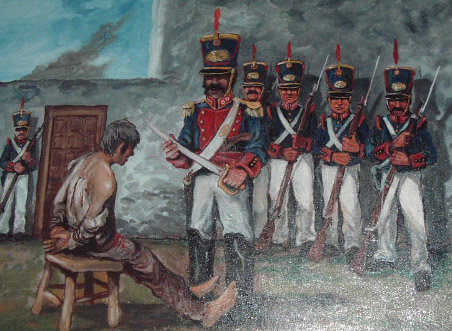
BIBLIOGRAPHY: DeWitt Clinton Baker, comp., A Texas Scrap-Book (New York: Barnes, 1875; rpt. 1887; facsimile rpt., Austin: Steck, 1935). Joseph H. Barnard, Dr. J. H. Barnard's Journal: A Composite of Known Versions, ed. Hobart Huson (Refugio?, Texas, 1949). Harbert Davenport, James W. Fannin's Part in the Texas Revolution (MS, Harbert Davenport Papers, Barker Texas History Center, University of Texas at Austin). John Crittenden Duval, Early Times in Texas, or the Adventures of Jack Dobell (Austin: Gammel, 1892; new ed., Lincoln: University of Nebraska Press, 1986). Hermann Ehrenberg, Texas und Seine Revolution (Leipzig: Wigand, 1843; abridged trans. by Charlotte Churchill, With Milam and Fannin, Austin: Pemberton Press, 1968). Joseph E. Field, Three Years in Texas (Greenfield and Boston, Massachusetts, 1836; rpt., Austin: Steck, 1935). Henry Stuart Foote, Texas and the Texans (2 vols., Philadelphia: Cowperthwait, 1841; rpt., Austin: Steck, 1935). Charles Adams Gulick, Jr., Harriet Smither, et al., eds., The Papers of Mirabeau Buonaparte Lamar (6 vols., Austin: Texas State Library, 1920-27; rpt., Austin: Pemberton Press, 1968). Hobart Huson, Colonel Fannin's Execution of General Houston's Orders to Evacuate Goliad (MS, Barker Texas History Center, University of Texas at Austin). Hobart Huson, El Copano: Ancient Port of Bexar and La Bahia (Refugio, Texas: Refugio Timely Remarks, 1935). Hobart Huson, Refugio: A Comprehensive History of Refugio County from Aboriginal Times to 1953 (2 vols., Woodsboro, Texas: Rooke Foundation, 1953, 1955). William Kennedy, Texas: The Rise, Progress, and Prospects of the Republic of Texas (London: Hastings, 1841; rpt., Fort Worth: Molyneaux Craftsmen, 1925). John J. Linn, Reminiscences of Fifty Years in Texas (New York: Sadlier, 1883; 2d ed., Austin: Steck, 1935; rpt., Austin: State House, 1986). Abel Morgan, An Account of the Battle of Goliad and Fanning's Massacre (Paducah, Kentucky?, 1847?). Kathryn Stoner O'Connor, The Presidio La Bah�a del Esp�ritu Santo de Z��iga, 1721 to 1846 (Austin: Von Boeckmann-Jones, 1966). Jos� Enrique de la Pe�a, With Santa Anna in Texas (College Station: Texas A&M University Press, 1975). Jakie L. Pruett and Everett B. Cole, Goliad Massacre: A Tragedy of the Texas Revolution (Austin: Eakin Press, 1985). Victor Marion Rose, History of Victoria (Laredo, 1883; rpt., Victoria, Texas: Book Mart, 1961). Antonio L�pez de Santa Anna et al., The Mexican Side of the Texan Revolution, trans. Carlos E. Casta�eda (Dallas: Turner, 1928; 2d ed., Austin: Graphic Ideas, 1970). Ruby C. Smith, "James W. Fannin, Jr., in the Texas Revolution," Southwestern Historical Quarterly 23 (October 1919, January, April 1920). Victoria Advocate, January 3, 1932, 88th Anniversary Number, September 28, 1934. Clarence R. Wharton, Remember Goliad (Houston: McCurdy-Young, 1931). Nell White, Goliad in the Texas Revolution (M.A. thesis, University of Houston, 1941). Dudley Goodall Wooten, ed., A Comprehensive History of Texas (2 vols., Dallas: Scarff, 1898; rpt., Austin: Texas State Historical Association, 1986). Henderson K. Yoakum, History of Texas from Its First Settlement in 1685 to Its Annexation to the United States in 1846 (2 vols., New York: Redfield, 1855).
 For questions or comments, send me an Email at
lenkubiak.geo@yahoo.com For questions or comments, send me an Email at
lenkubiak.geo@yahoo.com
|










 For questions or comments, send me an Email at lenkubiak.geo@yahoo.com
For questions or comments, send me an Email at lenkubiak.geo@yahoo.com




